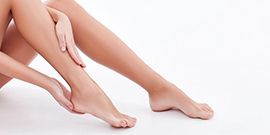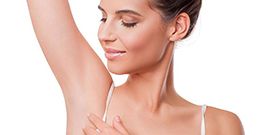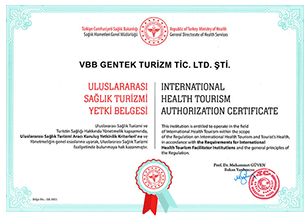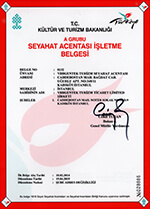Excessive Sweating Treatment
Sweating is a natural physiological defense mechanism that occurs to decrease body temperature when we exert excessive effort or when we are excited or scared or when our body temperature increases excessively.
We all sweat when we exert excessively or in very hot weather. Sweating is a natural self-defense mechanism of our body, however, there are also conditions in which sweating is not normal. Such a situation may adversely affect our social life.
What is Excessive Sweating (Hyperhidrosis)?
Hyperhidrosis is a condition characterized by excessive sweating regionally or generally, other than natural sweating. It is caused by overactive sweat glands in certain parts of the body.
Why do we sweat?
Sweating is a physiological mechanism necessary to regulate body temperature during exercise, hot or cold weather. In addition, stress and excitement may also increase sweating.
Symptoms of Excessive Sweating
Regardless of the ambient temperature, palms and feet are humid or cold up to wrists and ankles. Plenty of sweat drips from fingertips in the presence of stress or another effect.
Complications Due to Excessive Sweating
Hyperhidrosis is not a condition that is directly harmful to health. However, especially in the summer, in the absence of enough water and mineral in the body, dehydration symptoms, loss of salt and water, may occur. Skin irritations and itching may occur. It may affect educational, business or social life, psychological state of some people.
How is excessive sweating diagnosed?
Diagnosis is made by physical examination. Diagnosis is not difficult as the findings of the disease are unique. However, it is important to distinguish excessive sweating from hyperthyroidism, diabetes, hypertension and other diseases that cause excessive sweating, such as pheochromocytoma, a hormonal disease. In such diseases, sweating occurs not only in the armpits, hands and feet, but mostly throughout the body.
Causes of Excessive Sweating
Hormonal changes, nutritional preferences, certain diseases and medications, and the psychological state we are in directly affect the amount of sweating. In some people, the characteristic of sweating (especially excessive sweating in the hands and feet) is passed on to the next generation by inheritance.
Treatment of Excessive Sweating
Medications, antiperspirant ointments and sprays, iontophoresis treatment, botulinum toxin (botox) injection and surgical treatment are the methods used to treat excessive sweating today.
Medications
Oral or systemic prescription medications are sometimes used to treat hyperhidrosis. Some of them are anticholinergics, beta blockers and clonidine hydrochloride. Although it is thought that these medications may limit general perspiration by preventing stimulation of sweat glands in theory, their long-term use is not recommended because of their serious side effects.
Antiperspirants and ointments preventing perspiration
Ointments, sprays and solutions may be effective for mild sweating. Solutions and sprays containing aluminum salts, which are usually applied at night, can be used. However, they may have side effects such as skin staining, irritation, allergic reaction. Due to their low rate and duration of effect, they are often not preferred today.
Iontophoresis treatment
It is applied by applying low voltage electric current to the skin. It's particularly effective on hands and should be applied as a long-term treatment. It cannot be used in epilepsy patients, pregnant women and patients with pacemakers. It may cause some effects including rash, pain, burns.
Botulinum toxin treatment (botox)
Toxin treatment to prevent excessive sweating under the armpits, hands and feet occurring for a number of reasons has become very common today. This method involves injection of a small amount of toxin to the active areas of sweating (2-3 mm below the skin). It acts by temporarily paralysing the nerve endings that stimulate the sweat glands in the region. It has no side effects. Sweating function in the body either ends completely with this method or requires repeating the method after 6-8 months. After the procedure, the person can resume normal daily activities and see the results of the procedure within 3-4 days.
Surgical treatment
Endoscopic thoracic sympathectomy is used especially in hands and armpits. It involves excision or removal of overactive sympathetic nerves, causing excessive sweating and it's an irreversible procedure. In some cases, sympathetic chains and branches can be cauterized or clamped with clips. Since these nerves have no function other than stimulating sweating, this surgery causes no effects, such as paralysis, loss of sensation and reduced reflexes.
Who can have this procedure?
Sweating intensity can be considered at 3 levels, including mild, moderate and severe. People with moderate and severe sweating problem need treatment.
Frequently Asked Questions
Excessive Sweating in Menopause
In menopause, women's menstrual cycles end naturally. The effects and severity of this condition vary from person to person. Some people may experience increases in body temperature, known as "hot flashes", cold sweats, night sweats or excessive sweating. This is due to changes in estrogen levels that affect the body's ability to regulate temperature.
Diseases causing sweating the most
- Overactive thyroid gland
- Goitre
- Overactive sympathetic nervous system
- Diabetes
- Menopause
- Excess weight
- Genetics
- Side effects of medications used
- Air temperature
- Gastritis
- Stress
- Tuberculosis
- Leukemia
- Malaria
- HIV/AIDS
Related Content
Hand and Foot Sweating
Excessive hand and foot sweating is often observed, which may cause problems in our social life and psychological state.
Read MoreArmpit Sweating
Sweating is a healthy body response. Excessive sweating can cause discomfort. Excessive sweating under the armpits adversely affects our health both physically and spiritually.
Read MoreMedical Aesthetics
With the non-surgical aesthetic applications, also known as medical aesthetics, it is possible to achieve the beauty you desire in minutes.
Read More






